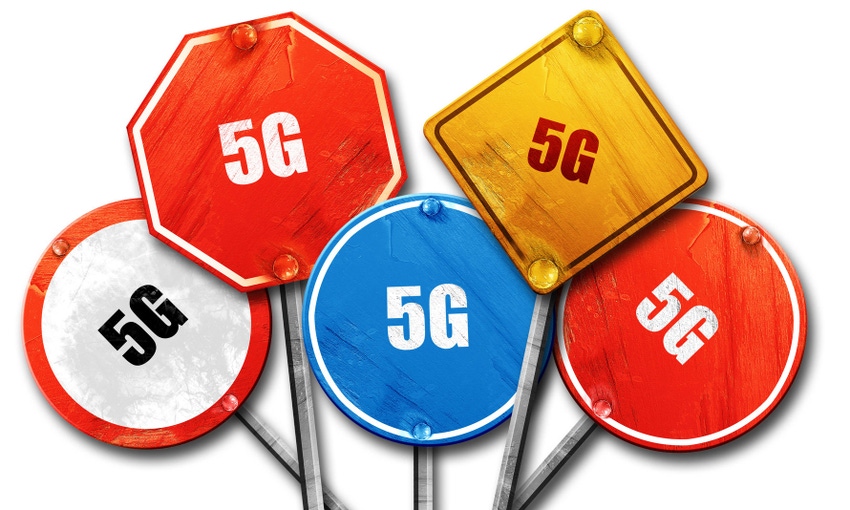5G is a game changing technology but implementing it will push the wireless industry to higher levels of complexity in network deployment and management.
May 23, 2018

Telecoms.com periodically invites third parties to share their views on the industry’s most pressing issues. In this piece Chintan Fafadia, Director of Product Management, RF Solutions, PCTel, details some of the considerations that you should factor into your 5G deployment.
The promise of 5G is that it will usher in a new age of intelligent networking, encompassing both human communications and the Internet of Things. It’s a game changing technology but implementing it will push the wireless industry to higher levels of complexity in network deployment and management. The 3GPP (the standards body for 5G) defines three major applications for 5G, all of which have major implications for how 5G networks will be built and optimized:
Enhanced mobile broadband
Massive machine-type communications
Ultra-low latency
Achieving the intents of these applications will require upgrading the entire fronthaul and backhaul network. On the fronthaul part, the most challenging aspect of 5G from RF perspective is employing millimeter Wave (mmWave) frequencies to achieve higher capacity. The challenge with mmWave is that they have short range (200 m to 600 m), are affected by weather conditions, have very narrow beam widths and are directional. Industry trials and planned deployments currently focus on rolling out 5G both in existing sub 6 GHz bands (called FR1 bands in 5G nomenclature) and mmWave bands (called FR2 bands in 5G nomenclature) initially planned in the range of 24 GHz to 40 GHz.
Before we dive deeper into 5G and its proposed RF spectrum, it will be worthwhile to understand how the industry has evolved in terms of RF deployments and spectrum usage. First generation cellular networks were initially deployed globally on 850/900 MHz bands. As technologies progressed, newer bands at higher frequencies were identified for 2G and 3G rollouts, including 1700 – 2100 MHz bands. However, in the mid-2000s, this new higher-end spectrum was considered less desirable. The primary reason for this was that carriers were focused on coverage.
More recently, the focus has shifted to capacity. With the advent of LTE and the hockey stick curves in data requirements and utilization, the industry has struggled for more spectrum irrespective of its frequency range and propagation characteristics. In fact, spectrum ownership in the higher frequency ranges (>2000 MHz) is now considered an advantage for capacity requirements. Higher-frequency spectrum enables cell site densification because the radio waves do not travel as far, leading to reduced RF interference from nearby cell sites and these bands have wider bandwidths. Now, even higher-frequency spectrum in the mmWave frequency range is being pursued to meet the even greater data capacity demands of 5G applications.
Before deploying 5G in the 24-40 GHz mmWave band ranges, operators need to characterize the propagation profiles for these frequencies in the field. Such high frequencies can be highly susceptible to non-line-of-sight losses, body losses, losses encountered from moving objects like cars and buses, and foliage losses. Their characteristics will vary not only by the topology and the urban or rural environment but also by the construction material used in buildings in different areas of the world. Most operators are planning to deploy these technologies in highly dense urban environments or in-building environments as a capacity improvement tool or for use in fixed wireless deployments as the high-speed link for the last mile (or kilometer).
Accurately planning for these deployments will require wireless network design tools with propagation models that have been highly calibrated to numerous different conditions and are able to map the spectrum behavior for each one of them. These calibrations can be done using simulations. However, a higher level of accuracy requires highly accurate field measurements. These measurements are collected using highly calibrated tools like scanning receivers, which can collect data for multiple bands and technologies simultaneously. Accuracy in capturing these propagation profiles for use in 5G designs enables maximum usage of spectrum capacity, the most expensive asset of any mobile operator’s portfolio. Network quality is considered a leading cause of customer churn with a clear majority of cellular network issues coming from the fronthaul. Consequently, improving network quality is a high priority which can result significant cost savings for operators in 5G deployments.
Another pre-deployment aspect to be considered for 5G is spectrum clearing. Whether the intended rollout is in the currently used sub-6 GHz bands (between 600MHz to 2.4GHz), in the newly proposed 3.5GHz to 4.9 GHz mid bands, or in the mmWave bands, operators will have to ensure clean spectrum on 5G frequencies before deployment. Test tools such as scanning receivers are extremely useful in such scenarios to cover multiple applications at the same time by collecting data for spectrum clearing along with model tuning needs.
While these are the challenges the operators will face before deploying a 5G network, the challenges they will need to overcome for optimizing their deployments will be even greater. 4G networks aren’t disappearing and will be around for at least another decade. 5G networks will be deployed either alongside existing 4G networks or on top of existing 4G networks, using multiple 5G Non-Stand Alone and Stand-Alone modes. These deployment scenarios, along with the plethora of options available for subcarrier spacing and channel bandwidths within the 5G bands, will all add to the complexity of 5G post deployment testing. In addition, there are many other aspects of 5G, including massive MIMO, fixed wireless access vs mobility, and numerous 5G applications, which we will cover in future posts. Stay tuned.
Meet PCTel and learn more about their solutions at 5G World 2018, taking place in London, 12 -14 June.
Read more about:
DiscussionAbout the Author(s)
You May Also Like








.png?width=300&auto=webp&quality=80&disable=upscale)


_1.jpg?width=300&auto=webp&quality=80&disable=upscale)


.png?width=800&auto=webp&quality=80&disable=upscale)